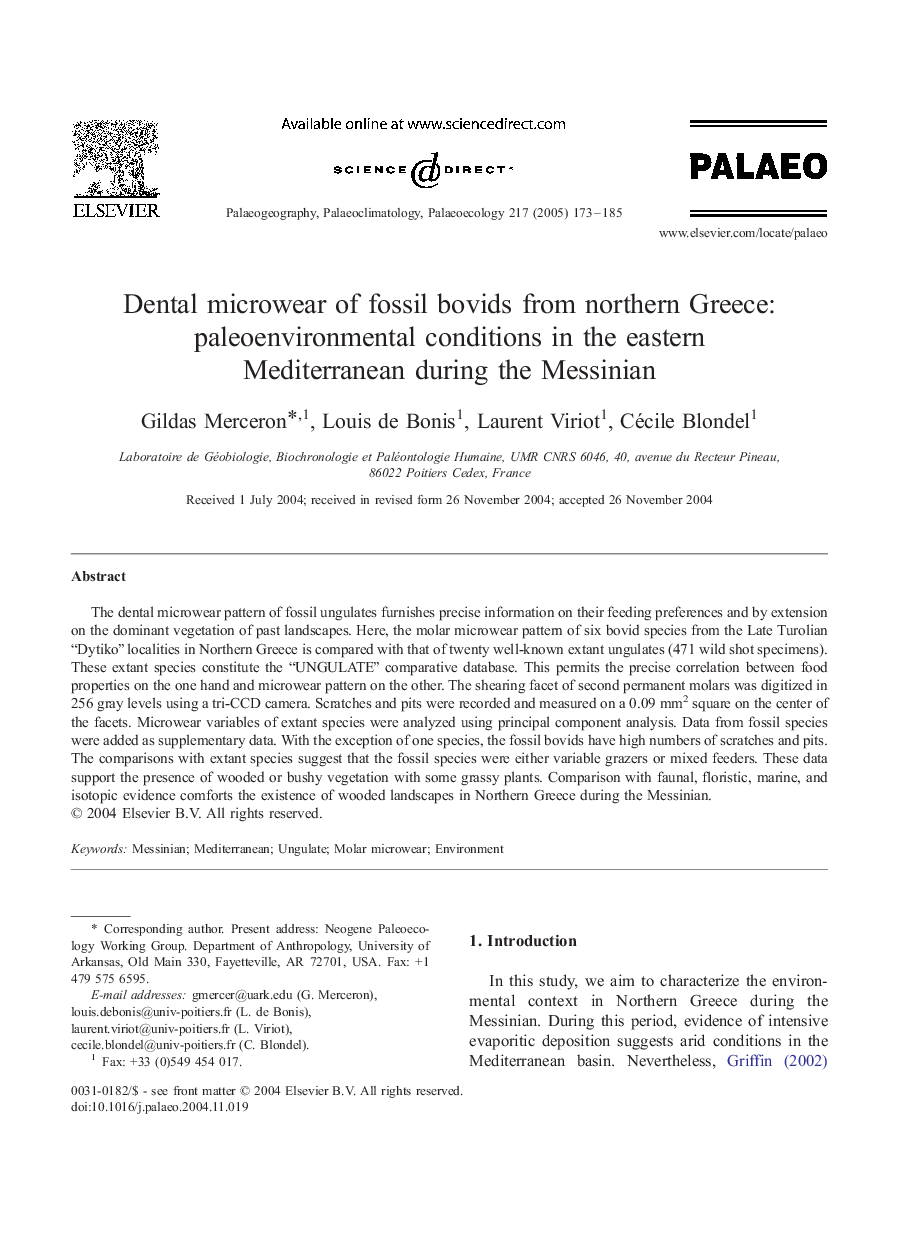| Article ID | Journal | Published Year | Pages | File Type |
|---|---|---|---|---|
| 9463188 | Palaeogeography, Palaeoclimatology, Palaeoecology | 2005 | 13 Pages |
Abstract
The dental microwear pattern of fossil ungulates furnishes precise information on their feeding preferences and by extension on the dominant vegetation of past landscapes. Here, the molar microwear pattern of six bovid species from the Late Turolian “Dytiko” localities in Northern Greece is compared with that of twenty well-known extant ungulates (471 wild shot specimens). These extant species constitute the “UNGULATE” comparative database. This permits the precise correlation between food properties on the one hand and microwear pattern on the other. The shearing facet of second permanent molars was digitized in 256 gray levels using a tri-CCD camera. Scratches and pits were recorded and measured on a 0.09 mm2 square on the center of the facets. Microwear variables of extant species were analyzed using principal component analysis. Data from fossil species were added as supplementary data. With the exception of one species, the fossil bovids have high numbers of scratches and pits. The comparisons with extant species suggest that the fossil species were either variable grazers or mixed feeders. These data support the presence of wooded or bushy vegetation with some grassy plants. Comparison with faunal, floristic, marine, and isotopic evidence comforts the existence of wooded landscapes in Northern Greece during the Messinian.
Related Topics
Physical Sciences and Engineering
Earth and Planetary Sciences
Earth-Surface Processes
Authors
Gildas Merceron, Louis de Bonis, Laurent Viriot, Cécile Blondel,
